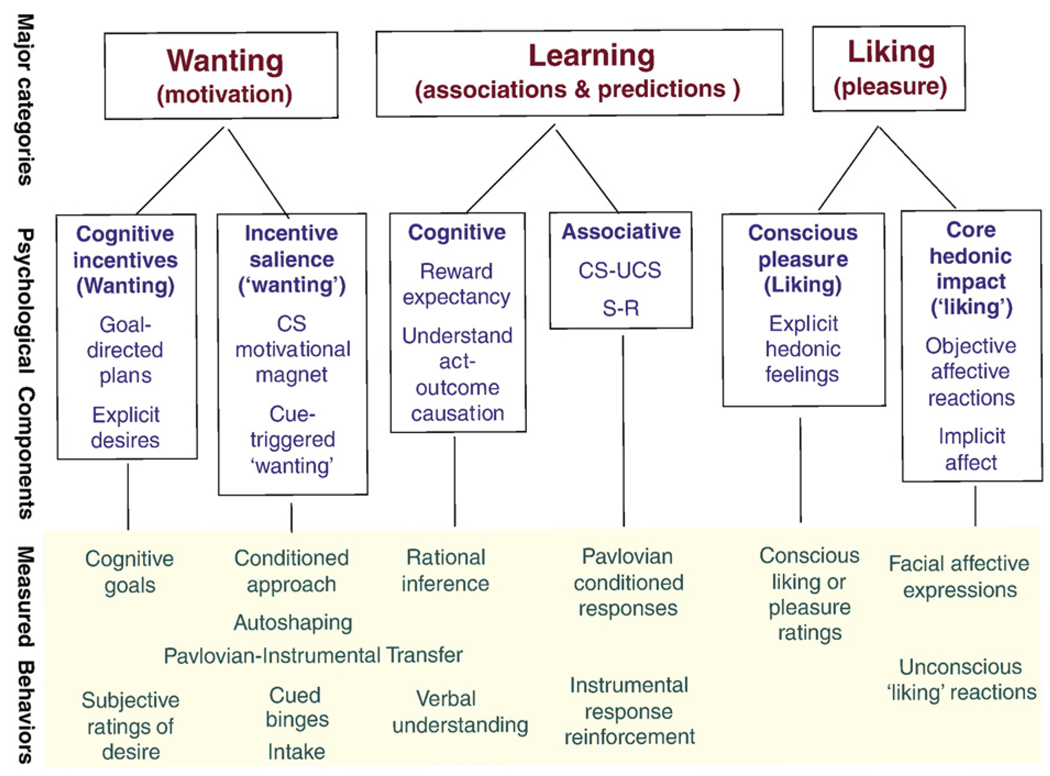Fig. 5.
Components of liking, wanting, and learning inside reward. This table represents the various components of reward discussed, and how each has been measured in experiments. The reward components occur together simultaneously, but have separable neural substrates and different psychological features. For example, ‘liking’ or core hedonic impact is generated by hedonic hotspot circuits in accumbens-pallidal-brainstem; ‘wanting’ or incentive salience depends heavily on mesolimbic dopamine projections to accumbens-striatum and related corticolimbic circuits, cognitive goal values of tasty rewards may involve orbitofrontal cortex, etc. Most reward components have both explicit (conscious) and implicit (unconscious) forms, which also can be measured in different ways and which may differ in neural substrates (e.g., cortical versus subcortical circuit weighting). Modified from [199].

